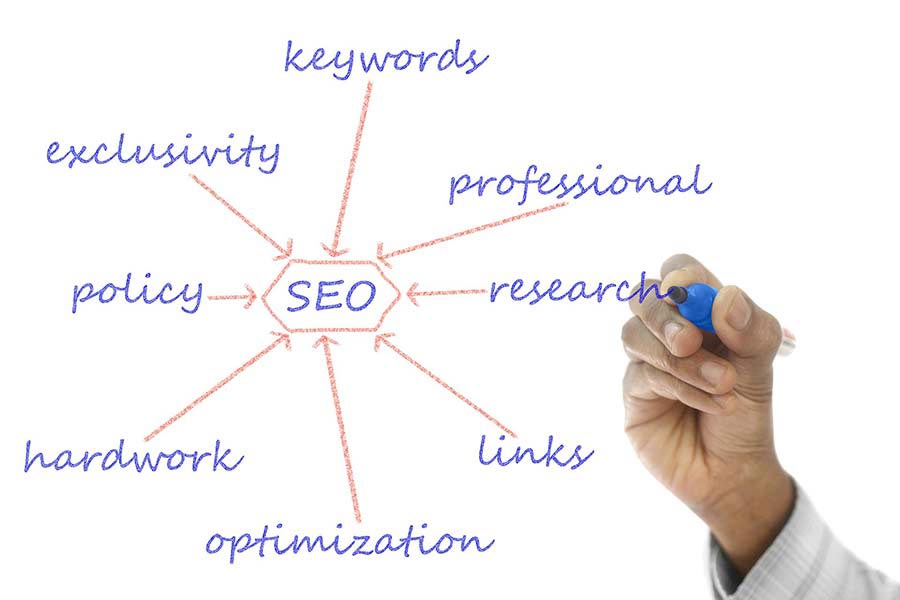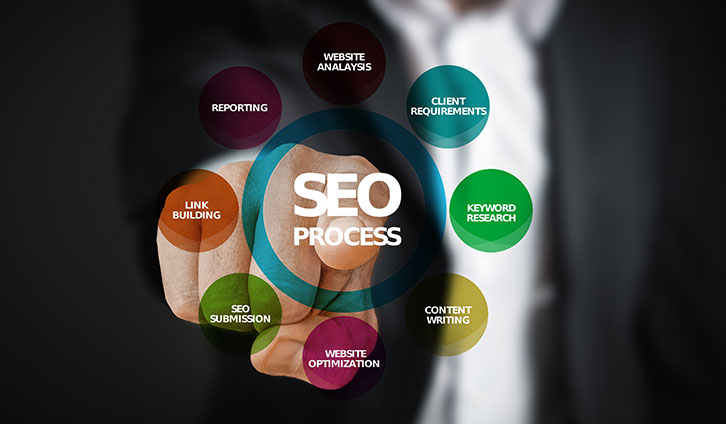Be the change that you wish to see in the world, Gandhi said.
If you want to improve your traffic, start with yourself. We firmly believe in that and that’s why our first article in the series of Traffic Boosting Tips is all about on-page SEO.
What is On-Page SEO?
Simply put,
On-page SEO is the practice of optimizing every single web page of a website in order for it to rank better in a search engine. Optimization means taking into account every single aspect of the page which when put together become a single coherent and relevant piece of content.
Most possibly, you’ve heard the term quite a lot by now. You’ve heard about some abstract concepts, some broad guesses about the search engines’ nature, and some extremely irrelevant meta tags praise.
The truth is, there is, in fact, a definite number of steps you can add to your checklist when optimizing your page. We’ve collected the 10 key elements of your on-page SEO.
10 Key Elements of Your On-Page SEO

1. Neat URLs
The foundation of your further SEO attempts is all set at this level. As your URLs are indicators for the search engines what the page is actually about, they have to be keyword rich. This means that not only it’s a good idea to have your focus keyword in your slug but it’s absolutely necessary for the page’s performance.
Another aspect of your URL to keep in mind is its length. The length is crucial not only for the engines themselves but also for the humans and their experience on the page. Serving as a hint to humans and search engines on the page’s topic, the URLs need to be as neat and short as possible. You might have noticed on your mobile searches that since 2015 Google has been increasingly replacing the URLs with breadcrumbs. This comes to show that Google believes in a clear and well-structured URL helping people understand your website’s content easily. Considering your URL as breadcrumbs can be in handy when wondering how to structure it.
2. Title Tags
The title tag is essentially your page’s face in front of search engines (and most importantly, people). It’s what comes up on the SERP and it’s what you can see on your browser tab. It’s also what will make people click on the page when faced with a full page of results on a search engine. Title tags are your most important on-page SEO element. That’s why they have to be representative and well-thought.
The length of your title tags is of incredible importance. As you know, search engines allow a certain length to be displayed on the result page – if it’s longer than that, it’ll get cut out. While here we’re talking about pixels, as some characters take up more pixels than others, you can simply apply a maximum of 60 characters rule and be set.
The focus keyword has to be at the beginning of the title as that gives it a priority. However, you shouldn’t clutter dozens of keywords you want to rank for. Make sure to sound comprehensible and clear.
Using modifiers and numbers helps to increase the user engagement once they’re shown your result. Modifiers typically are words such as “best”, “2017”, “cheap”, and any other phrases people might include in their search receiving a great SEO priority. Even though people don’t usually look for “52 studying tips”. including numbers in your title tags will attract more visitors to your page once you’ve ranked in the engine.
3. H1 Tag
The H1 tag defines a certain text as a title. While it can be the same as your meta title, it’s important that you still put it into <h1> tag, as that will build your content’s continuity and point out the topic of the page to the search engines. Even though WordPress automatically gives your titles an H1 tag, it’s still important to always make sure you have it in your site’s code.
4. Keyword Priority
All of your SEO efforts should be revolving around your focus keyword. A focus keyword is a word or phrase for which you want your page to rank on a search engine. This means that the whole content needs to incorporate that effort in order for it to work.
A key point here is that your keyword needs to be in the first 100 words of your text. This shows the engines that you care to make your page’s purpose clear to your visitors from the very beginning. It means that you’ve set a certain tone.
Furthermore, the keyword needs to be present throughout the whole text. An ideal keyword density would be about 0,5% without taking into account synonyms and semantic families. We’re going to discuss them in the next point.

5. LSI Keywords
LSI (Latent Semantic Indexing) is a search engine method used to determine the relationship between concepts within a piece of content. It includes synonyms and semantic families which represent the focus keyword. Sprinkling this type of keywords in a text means that you’ll avoid repetitions, craft rich content and improve your users’ experience. Using synonyms determines your page’s relevancy to its keyword and also makes a text much more comprehensible for the readers.
6. Engaging Media
Including engaging images, videos, and graphics on your pages has an implicit effect on your SEO performance. If you’re able to catch people’s attention right after they’ve entered your website, the bounce rate will be reduced. That’s a key indicator for search engines that you’ve done something cool there. And on top of that, when people spend more time on-site, your ranking will improve as it will mean they’ve found what they were looking for, therefore, your page was relevant to their search.
7. Media Optimization
The media, just like the text, play a crucial role in your on-page SEO. That’s why optimizing images and other types of media is just another part of the process.
Make sure you include your focus keyword in the name of the media files (focus-keyword.jpg). This not only helps their performance but also is much more user-friendly than dsjdasj.jpg. The keyword has to also be part of the Alt Attributes of the images as Google reads them as a key detector for relevancy.

8. Outbound links and Internal links
Outbound is all of the links on your page that refer to an external source. A study conducted by Reboot a year ago shows that search engines take your outbound links into consideration. It is thought that the links you use on your pages are directly related to your relevancy, authority, and utility.
Internal links, on the other hand, establish your site’s architecture and spread the so-called “link juice”. This means that search engines need to have an access to a crawlable link structure on your page and the best way to provide them that is to include internal links within your pages. That also helps to increase the time spent on site which as we said is a great sign to engines.
9. Full and Lengthy Content
Now, I guess it’s obvious to you just as it is to me, that when you post certain content, you’re trying to solve someone’s problem. People prefer spending time on pages that have full, detailed, and high-quality content as opposed to the ones providing short answers. The same goes for search engines. A case study by Backlinko proves the point by finding out that “the average Google first page result contains 1,890 words.” So, when it comes to your SEO, always remember that length is the strength.
10. Responsive Design
It’s 2017 and it shouldn’t be surprising that responsive design is a ranking factor. Google has stated multiple times that responsiveness is its recommended design pattern. Once you take a look at the top results for any search, it becomes perfectly clear that it also affects your SEO performance. Even though here we’re talking about mobile devices, this is still a key element of your on-page SEO. The most obvious and undeniable benefit is including all types of device owners on your website. And at this point, you should be aware that UX is a number one priority when it comes to content creation.
